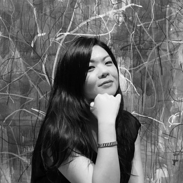Market
International Visitors Are Flocking to Art Week Tokyo as Japan’s Art Market Gains Steam
The event, which busses visitors to galleries around the Japanese capital, is attracting an increasingly larger crowd.
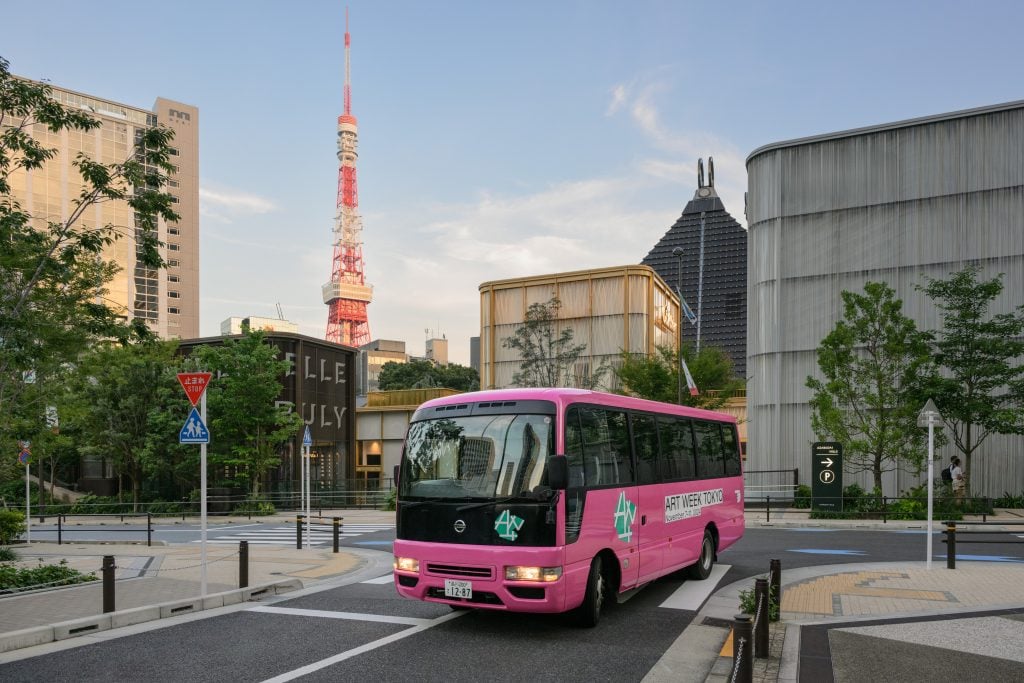
When Art Week Tokyo first welcomed international visitors in 2022 as travel restrictions eased, it was considered to be flipping the art world’s usual script by bussing VIPs directly to galleries rather than staging another art fair in the Japanese capital. Two years on, the formula seems to be working as international interest in Japanese contemporary art surges.
Despite a slight overlap with Shanghai Art Week, the two VIP days of this year’s Art Week Tokyo on Tuesday and Wednesday saw a bigger turnout than previous yers. Organizers added two more buses to accommodate the increased demand. Many also traveled from Kyoto after attending Art Collaboration Kyoto (ACK) last week.
“People are now aware of Art Week Tokyo and recognize it as an art market event on the global calendar,” said Tomoko Ashikawa, the director of participating Tokyo gallery Waiting Room, adding that the synergy with ACK also helps to bring international visitors.
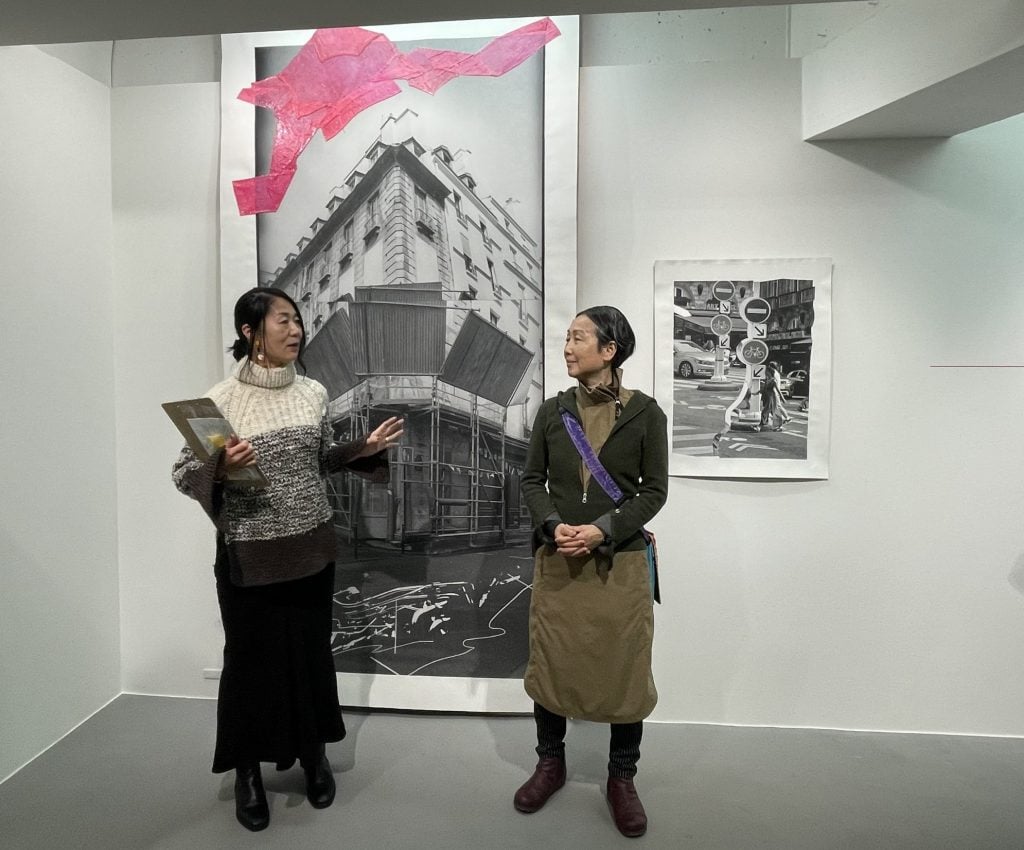
Tomoko Ashikawa, director of Waiting Room, and artist Yuki Onodera, introduce the artist’s solo exhibition “Parcours – Between pneumatic post and homing pigeon” to visitors during Art Week Tokyo 2024. Photo: Vivienne Chow.
International Influx
Over the last few years, Japan’s art scene has gained a more global following. That’s due in part to the country’s weak yen, which has made it more affordable for tourists coming from countries with stronger currencies, according to Ashikawa, who added that it has also made it more expensive for Japanese galleries to exhibit at art fairs abroad. But there is also major international investment underway as more Western galleries, such as Pace and the Los Angeles-based Nonaka-Hill, open outposts.
Akiko Horiuchi, director of Gallery 38 has noticed an uptick in international visitors after lockdown restrictions lessened, especially from the U.S. and Europe. The gallery is presenting Japanese sound artist Miyu Hosoi’s first solo show with the gallery during the art week. She noted that some of these new buyers may have jumped on the collecting bandwagon as contemporary Japanese art has become more fashionable in recent years, but the art week “is still a good way to introduce new artists” to a bigger international crowd.
A whopping 80 percent of VIPs have come from overseas for this edition, according to Atsuko Ninagawa, the co-founder and director of Art Week Tokyo, which is organized in collaboration with Art Basel and partly funded by the national and city governments. This figure includes collectors from Taiwan, South Korea, and elsewhere across Asia.

Installation view of AWT Focus, “Earth, Wind, and Fire: Visions of the Future from Asia,” curated by Mami Kataoka, at the Okura Museum of Art, Tokyo, 2024. Photo by Kei Okano. Courtesy Art Week Tokyo.
Tokyo is the biggest city in the world and getting around is far from straightforward. That’s in part why bringing art collectors and curators door-to-door to two dozen galleries scattered across the Japanese capital is welcomed. A total of 4,000 VIPs signed up for this year’s event, but not all of them boarded the seven VIP buses, which were available on the two VIP days only (November 5–6). Forty-one buses are running through the public days from November 7 through 10, connecting 53 participating galleries, institutions, and art spaces.
In addition to the gallery stops, the event also features the second edition of a curated sales platform, AWT Focus. The selling exhibition features works by artists represented by galleries based not just in Tokyo but also in Kyoto and those from the region, including TKG+ from Taipei, Kukje from Seoul, and Silverlens from Manila.
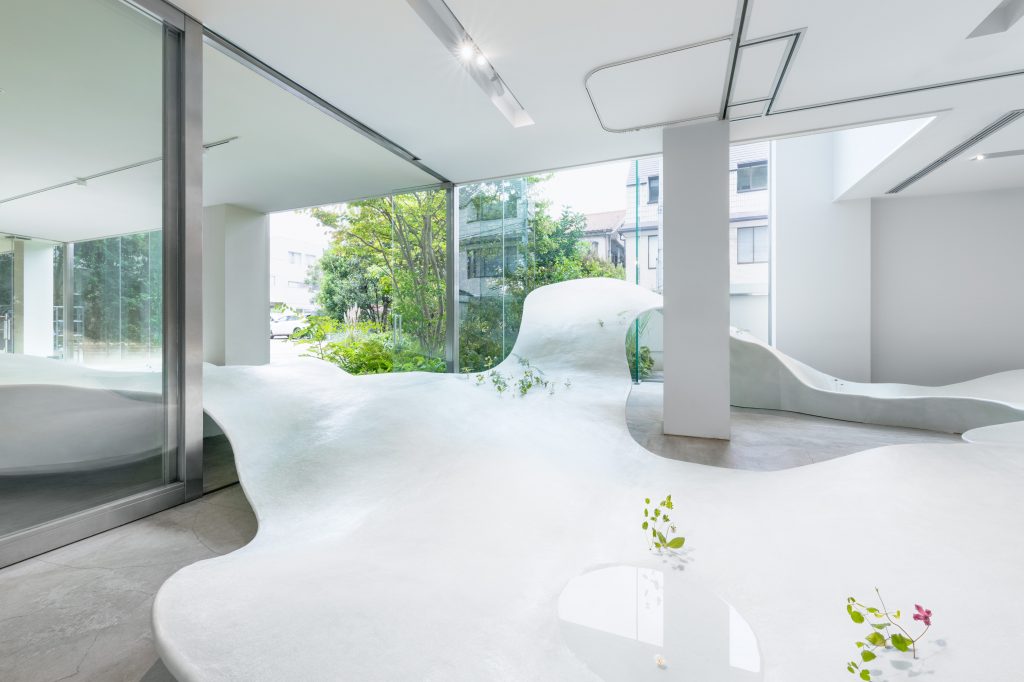
Eiko Tomura, “Landscape as Bar,” commissioned for the AWT Bar, 2024. Courtesy Art Week Tokyo.
There is more local interest as well, Ninagawa said, as Japan’s collector base broadens. In recent years, a new generation of art collectors has arisen. The country is Asia’s second largest market in terms of auction sales, bringing in five percent of all auction sales in the region last year, according to the Artnet Price Database. (China led by an outsized margin, bringing in 85.5 percent of all fine art sales at auction in Asia between 2023–24.)
Managing Demand
New collectors have been drawn to the market but their lack of exposure to contemporary art concerned Ninagawa. She noted that after Japan’s economic bubble burst in the 1990s, the Japanese art market was “burnt out” and many collectors who bought art during the boom years found they had little value on the international market.
“I am afraid that such a situation will happen again,” Ninagawa said, adding that the market has distanced itself from art practices, especially in Japan, where many are uncomfortable talking about money. “There is an urgent need for education and to create a comfortable environment for art economic activities. [The art week] offers collectors better understanding of what they are buying, creating a healthier market in the long run.”
Solid sales reported during the VIP days suggested that this was the right move. At AWT Focus, the group show titled “Earth, Wind, and Fire: Visions of the Future from Asia” featuring works that have Asian connections by 57 artists, gained traction from VIPs, with some of them visiting the show at the Okura Museum of Art more than once. Curated by Mami Kataoka, director of Mori Art Museum in Tokyo, the thoughtful exhibition juxtaposed contemporary names with historical artifacts from the museum’s collection. The most valuable work on display was a €150,000 ($160,670) video work by French artist Laurent Grasso, presented by Perrotin.
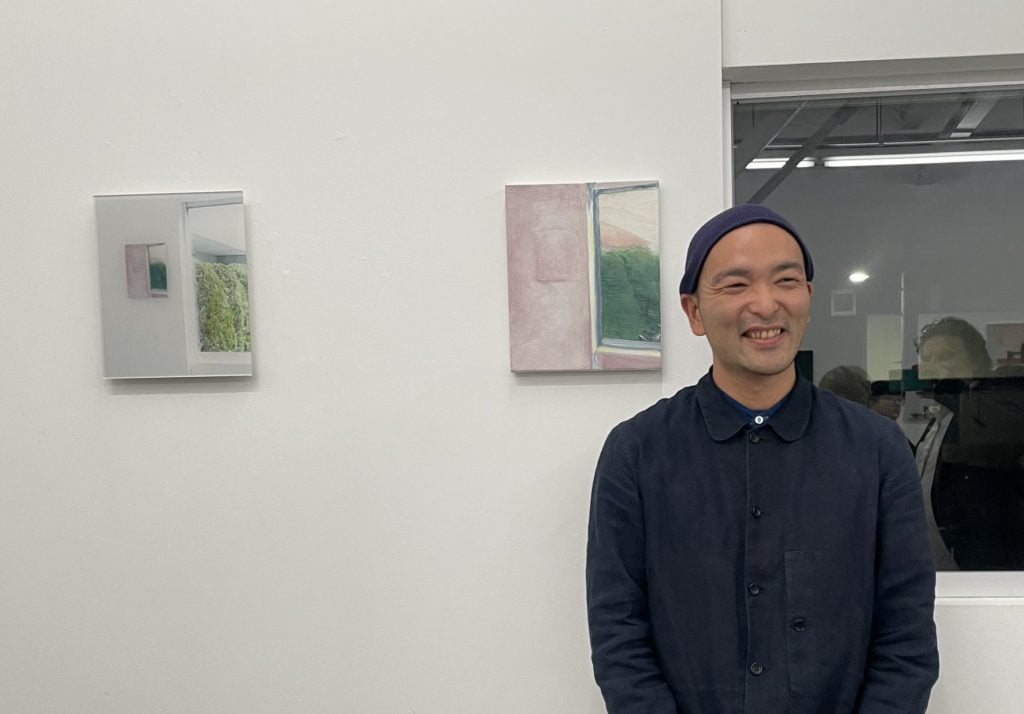
Artist Yutaka Nozawa and his photography-painting diptych on view at his solo exhibition “Still Life” at Kayokoyuki during Art Week Tokyo 2024. Photo: Vivienne Chow.
Among the 40 participating galleries around the city, roughly half of them were included in the two-day VIP bus itinerary, for which they pay an additional undisclosed fee. Galleries bringing solo exhibitions of Japanese artists with works priced in the four- to five-digit dollar range appeared to make the most sales. Kayokoyuki sold at least half of artist Yutaka Nozawa’s conceptual photography-painting diptych, priced between $1,400 and $5,200, that was on display and kept rotating new works at the gallery. Take Ninagawa, a gallery owned by Art Week Tokyo’s Ninagawa, sold a number of watercolor drawings, priced around $1,200, and delicate, small sets of installations in paper boxes, priced around $3,000 to $4,000, by artist Ryoko Aoki.
Leesaya, an emerging gallery, sold several paintings by Shusuke Tanaka in the low-thousands range. Gallery Koyanagi sold several editions of the stunning video installations by Tabaimo, who represented Japan at Venice Biennale in 2011. Waiting Room sold photography works by Paris-based Japanese artist Yuki Onodera priced in the three to four-digit range. Aoyama Satoru’s funky conceptual embroidery works that question the issues of labor and capitalism on view at Mizuma Art Gallery are also among the sought-after works, most available at several hundred or thousand dollars.
Works by big-name market stars are also on offer. Pace, which just opened its Tokyo outpost in September, presented a solo exhibition of sculptures and other works by American artist Arlene Shechet. Nanzuka Underground sold out a show of Indonesian artist Roby Dwi Antono‘s new paintings, all priced at $55,000. Blum, which has spaces in Tokyo, Los Angeles, and New York, is presenting new works by market darling Yoshitomo Nara. Paintings are priced at $850,000 to $1.1. million, works on paper are $180,000, and small sculptures have a price tag of $50,000. All were sold.
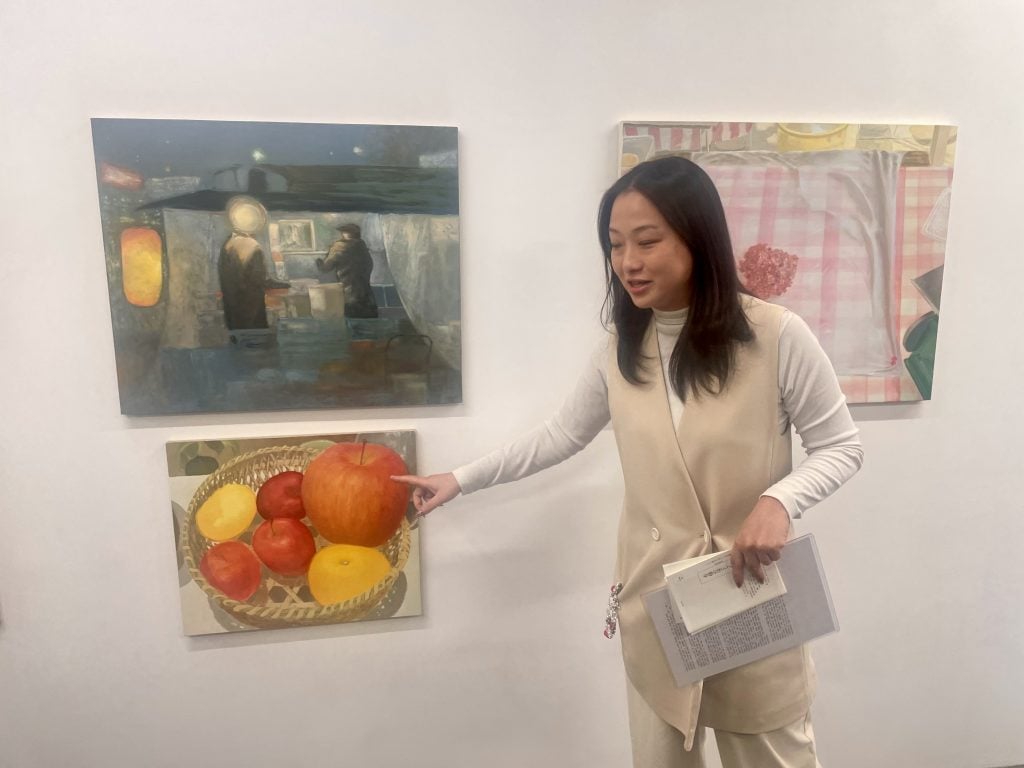
Tokyo-based art dealer Lee Saya introduces the paintings by Japanese artist artist Shusuke Tanaka to VIPs during Art Week Tokyo 2024. Photo: Vivienne Chow.
“Tokyo is more than a cultural capital of Asia. It can be much more than what it is now,” noted Tim Blum, who began working with Japanese contemporary artists more than three decades ago.
Nevertheless, Blum warned of the superficiality of the “reignited obsession with Japan” amid the growing interest in country’s art scene and market, particularly art world players parachuting to the country. The insularity of Japan’s culture is a blessing as it maintains its integrity, but it is also a curse as it is not easily understood to outsiders, he pointed out.
“I support having more people coming here but if you think that you wanted to move here after coming here for two weeks, thinking that it is a utopia, it is a surface read of the culture,” he noted.
Art Week Tokyo runs through Sunday, November 10, at various locations.

